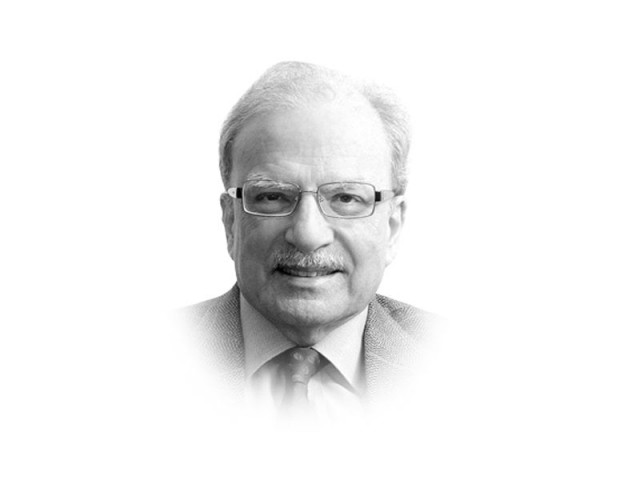
If Pakistan is to move beyond today’s anemic rate of growth of four to five per cent a year and attempt to reach a six to seven per cent rate, it will have to find another source of external flows. This will be the case unless it is able to bring about serious structural changes in the economy which will lead to the mobilisation of domestic resources to pay for development. However, for that to happen it will require political will current set of policymakers seem unable to muster. This means a continuous reliance on external flows of capital.
With the US seemingly out of the picture, China becomes the more attractive presence. Beijing has already committed $45 billion to finance the growing list of projects belonging to the CPEC. Beijing is doing this for its own strategic reasons. It now has the economic strength to aid Pakistan and other countries in the region it has now come to dominate. Its economy is now 32 times larger than what it was in 1980 when it embarked on a programme of economic reform and opening its economy to the outside world. With that accomplished, the question is being asked where China is now headed. To this we should add another question: Is there a place for Pakistan in the development paradigm Beijing is working on?
“When China’s stock market and currency both plunged last January, many global investors assumed the end was near,” wrote a team of Financial Times analysts in a detailed assessment of where China was headed. There was intense skepticism about China being able to defy historical patterns of growth. No country, certainly none the size of China, was able to sustain a rate of growth of around 10 per cent a year for more than a decade or two. China was able to do it for more than three decades. There is a growing consensus among serious China watchers that the endgame has been reached.
The only hopeful reading of the situation focused on the rapidly changing pattern of spending in the country. People with disposable incomes are spending their consumption which is giving rise to new type of manufacturing. Within a decade or two much of China’s manufacturing is likely to meet domestic demand rather than demand for cheap manufactures from consumers in rich countries. This switch has tremendous consequence for Pakistan.
Much of the CPEC-related discussion in Pakistan is focused on the energy projects included in the programme or on the chosen routes for the highways the Chinese are building. But the real meaning of the CPEC lies somewhere else. Beijing is now focusing on two things, both of significance for Pakistan. It is investing in “land-based commerce” that will bypass sea routes to get goods and commodities into and out of China. Beijing in addition to large investment in Pakistan’s infrastructure, has also committed $35 billion to construct highways in Kazakhstan. Once this “One Road, One Belt” project is up and running, China will have opened large tracts of sparsely populated lands. The Pakistani part of the programme will also focus on relocating the manufacturing enterprises that relied on cheap labour. Labour is no longer cheap in China and it makes sense to use workers in the countries where development has not resulted in increasing wages. Pakistan is one such country.
Published in The Express Tribune, January 9th, 2017.
Like Opinion & Editorial on Facebook, follow @ETOpEd on Twitter to receive all updates on all our daily pieces.














COMMENTS
Comments are moderated and generally will be posted if they are on-topic and not abusive.
For more information, please see our Comments FAQ